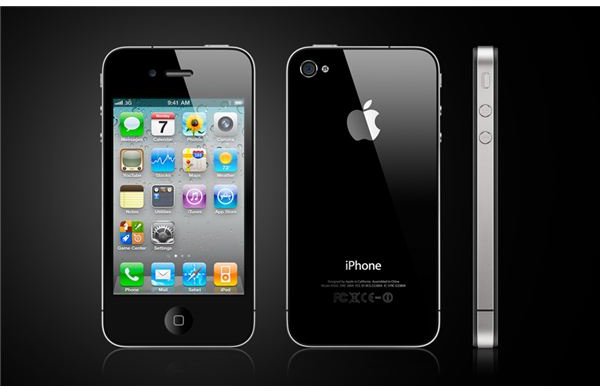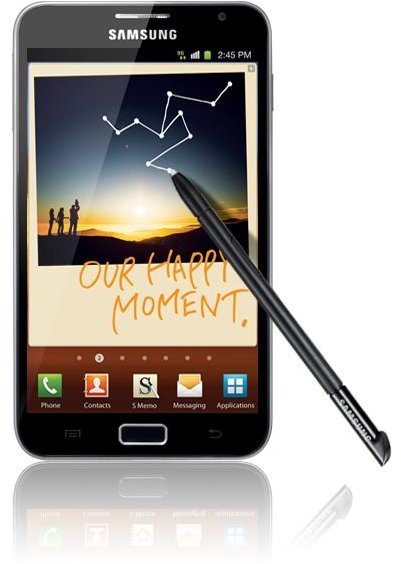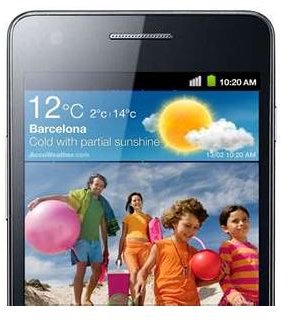Is Bigger Better? Apparently Consumers Don't Like Larger Touch Screens!
Is Bigger Not Always Better?
Apparently bigger is not always better in the world of smartphones and their screens according to PC World writer Mikael Ricknäs, who claims that industry experts say consumers are shunning phones with larger screens.
Oh really? Because the Samsung Galaxy S2 has not been given a bad review by anyone, and is outselling the iPhone in markets where it has been released for a good few months. In fact just this week sales of the S2 reached the 10 million mark – with a 4.3 inch screen this isn’t pointing to a huge commercial failure for larger touch-screen phones I think you’ll agree.
What About the iPhone?
As we wait with bated breath for the shy iPhone 5 to raise its perfectly designed screen to the world, there have been many rumors

circulating about its appearance. The general consensus seems to be that it will definitely be larger, but of course we just don’t know. As iPhone users play more games on their phones than anyone else, and with movie streaming a very definite reality it makes sense that the screen really needs to be bigger than it is on the iPhone 4. To compete in a market that is catching up to Apple, I really think that the iPhone needs a bigger screen than the current 3.5 inches, which frankly looks a little wimpy next to the competition.
There is of course an argument that you can lose quality of display on a larger screen, and the retina display on the iPhone is unrivalled, so can Apple tech deliver? Well, maybe they won’t have to if they listen to Bob O’Donnell at IDC. “People are mostly happy with a phone of a reasonable size, 3.5 or 4 inches.” Well, at the risk of repeating myself, the sales of the S2 would dispute this strongly, and even taking that out of the equation, you can’t assume that people are happy with something if you aren’t offering them anything else. People have been mostly happy with screens of that size, because that’s all there has been.
And despite Cult of Mac, jumping on the PC World bandwagon on this issue, claiming that manufacturers like Samsung are overcompensating with jumbo-sized screens and that they’d be happy with a screen just slightly bigger than the current iPhone, the plethora of respondents disagree. They want a bigger screen of high-quality from the iPhone 5, or they’re likely to go elsewhere (and some already have).
When Phones Become Tablets

One of the biggest flaws with Ricknäs’s article, is that in trying to make the point that smartphone screens are reaching ridiculous proportions, he cites the Samsung Note and the Sony Tablet P as being prime examples of this. Correct me if I’m wrong, but isn’t the clue in the names here? These devices are tablets, not smartphones and make no pretentions to be anything else. They also say that the biggest smartphone screens are between 4.5-5.5 inches which is simply not true at time of writing. The iPhone-trouncing Galaxy S2 is dominating markets with its 4.3 inch screen, but the largest smartphone screens are yet to be released – the Sprint and T-Mobile versions of the S2 at 4.5 inches and the WP7-powered HTC Titan at 4.7 inches. There is debate over whether the 5 inch screen of the Dell Streak is a phone or a tablet (Dell insist it’s a tablet), but there are certainly no smartphones out there with 5.5 inch screens.
He also goes on to cite how unsuccessful the Dell Streak has been, saying that consumers have shunned it because of its size. But the reasons consumers may not be loving this device in their droves are also presented clear as day in the PC World review that it links to, and none of it has anything to do with screen size, whether phone or tablet.
In the article’s confusion over the difference between tablets and smartphones though, it does raise the interesting question of where smartphones become tablets. With smartphones becoming larger, and everyone out to create the iPad killer, tablets are trying various ways to gain a corner of the market, so of course smaller tablets are being released. So where is the divide? I had thought that one way to distinguish a smartphone from a tablet would be that if you could comfortably hold it in one hand and use it as a phone, then it must be a phone.
Then of course Samsung come along and announce that the Note with its 5.5 inch screen is a whole new category somewhere between the two. It’s certainly a tablet in its looks and functions, but you could also comfortably hold it one hand. Of course we won’t know how successful this device will be for a while, but I don’t think anyone choosing to buy one would do so thinking it was a phone.
Big & Bulky
Of course it may well be true that bigger screens and bigger smartphones aren’t for everyone. According to Daniel Freeman, design lead at Fjord, “If you look at it from the consumer side, there is battery life, the cost of these new big panels and the fact larger screens are more susceptible to breaking.” It is certainly true that these amazing screens and quality displays use up the battery juice, but battery technology is catching up to this (slowly). An investigation into the battery life of the Galaxy S2 by Engadget was highly favorable, showing that it took 20 hours to get the phone down to 15% after a high amount of use. Of course this means that you need to charge it everyday, but so do my iPhone-loving friends. The advantage of course that Android-running smartphones with larger screens have over iPhones is that Android allows you to make many more changes to prolong the battery life anyway.
And as for larger touch screens being more susceptible to breaking? They are not so unwieldy that you are more likely to drop them, and the glass doesn’t become thinner the bigger the screen gets. If you drop your phone on a hard surface and it breaks, then it’s fair to say that would happen no matter what size screen you have.

Of course Freeman also makes the point that putting a larger phone into your pocket is more awkward and you want to be able to use the phone as a phone without looking foolish. This is a fair point, which takes us back to the issue of when a phone becomes a tablet – when holding one to your ear makes you look like an idiot! Only then will we know that smartphone screens have gotten too large. In the meantime let’s just revel in the gorgeous displays and use them as they are meant to be used – big and beautiful!
Is the line between smartphones and tablets becoming blurred? Are smartphone screens getting ridiculously large? Leave a comment below and let us know what you think.
References
- Samsung Galaxy S2 hits 10 million sales mark, Tech Radar, http://www.techradar.com/news/phone-and-communications/mobile-phones/samsung-galaxy-s2-hits-10-million-sales-mark-1029178
- Samsung Galaxy Note image: http://www.samsung.com/global/microsite/galaxynote/note/index.html?type=find
- Galaxy S2 image: http://www.samsung.com/global/microsite/galaxys2/html/
- iPhone Image: Apple, www.apple.com/iphone4/gallery
- Oversized Nokia phone image: skyhawk824/photobucket
